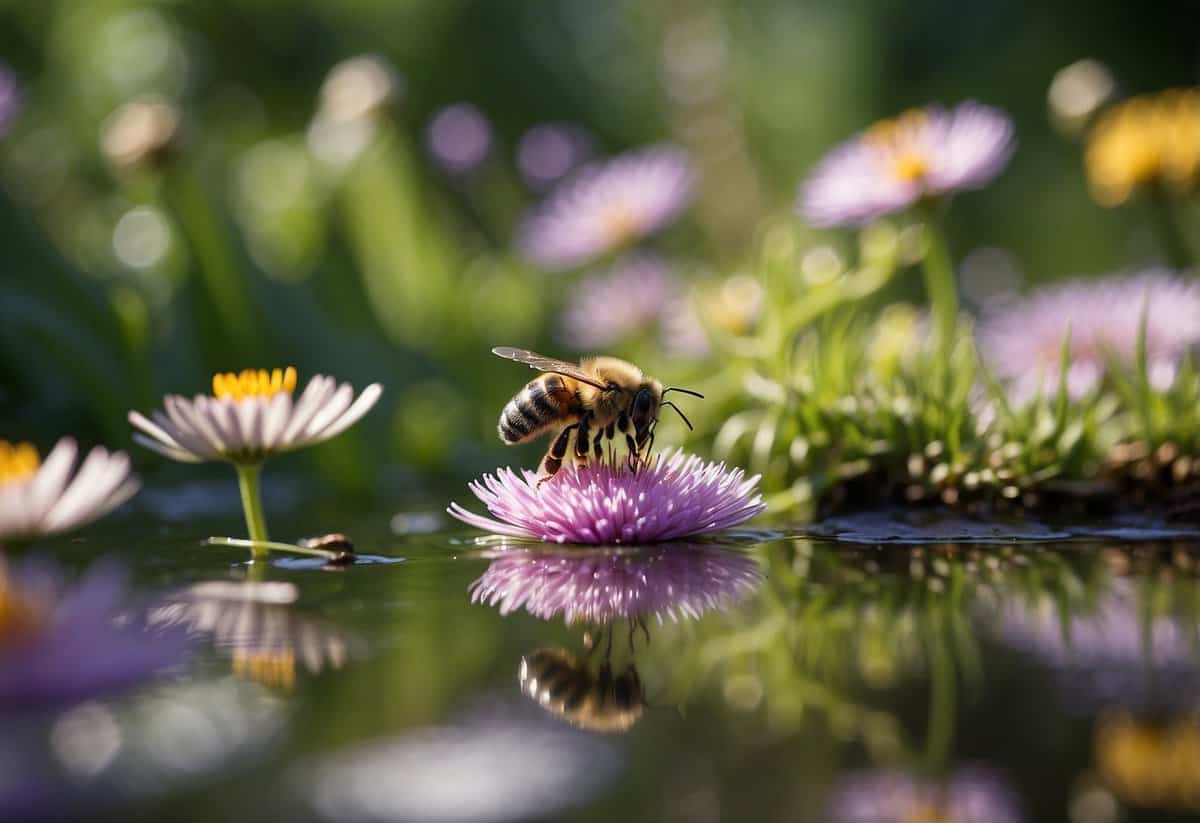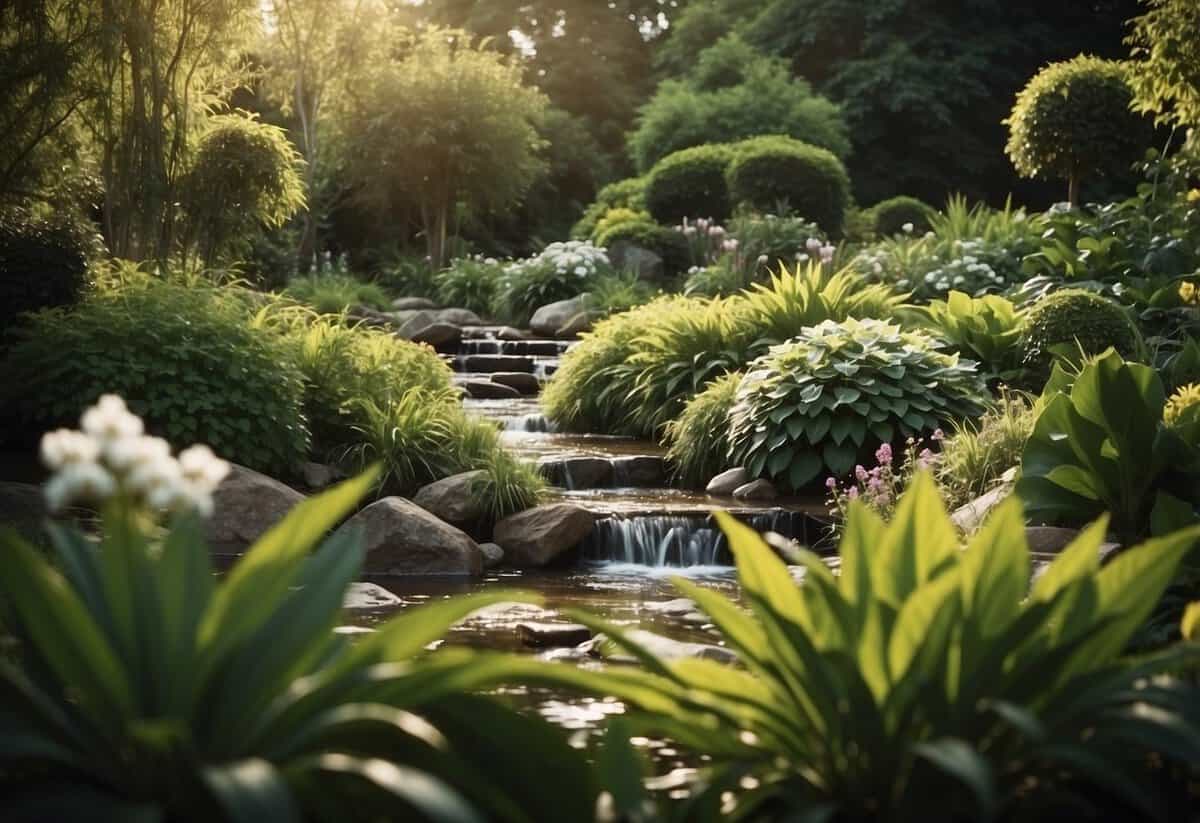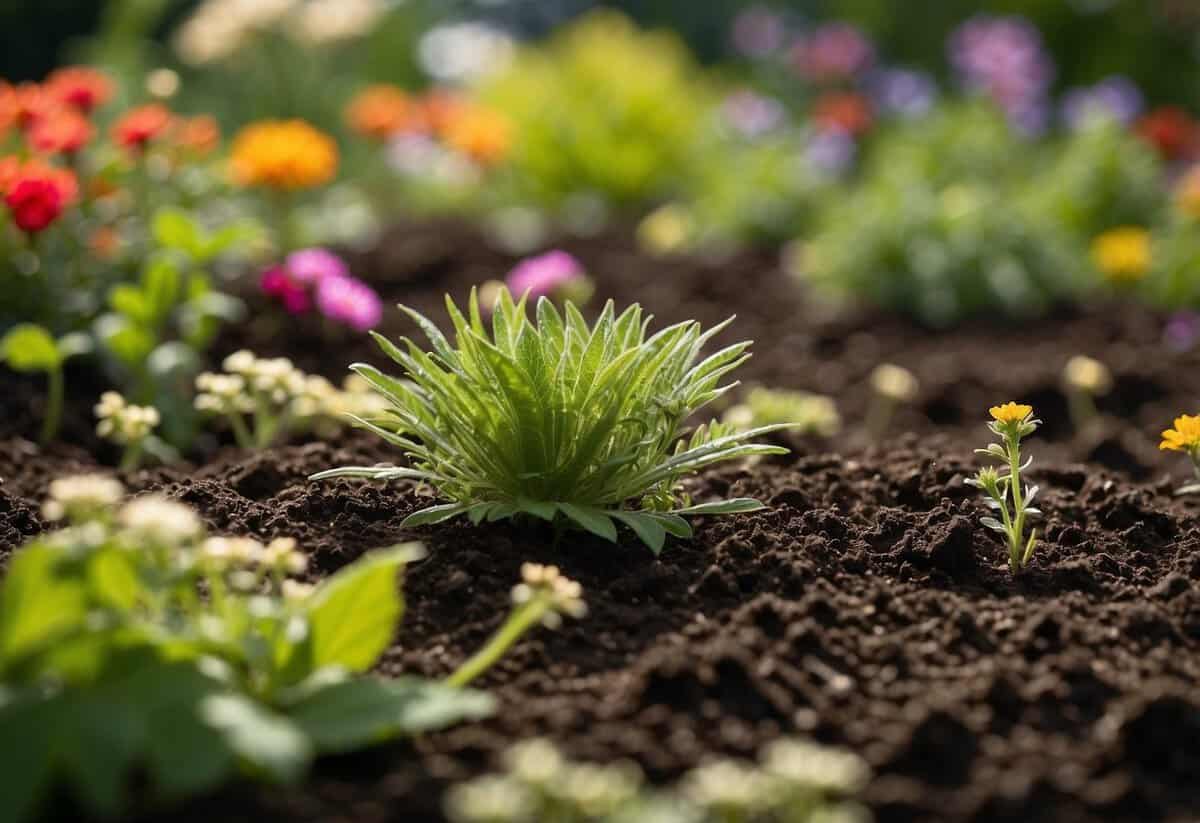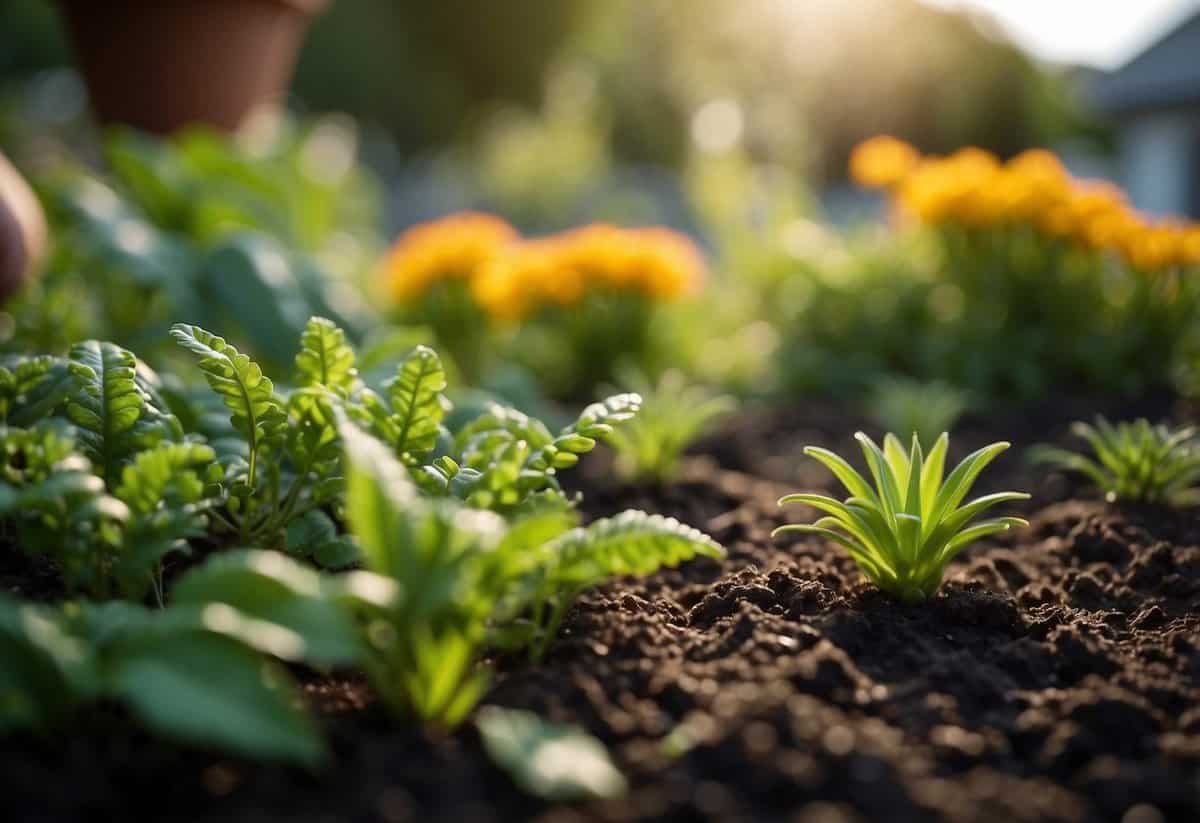What Is a Holistic Garden? Creating Harmony with Nature
When you think about a garden, you might picture flowers and vegetables. A holistic garden, however, goes beyond this by creating a space where mind, body, and environment connect in harmony. In holistic gardening, every element works together to support sustainability and balance, ensuring that both plants and people thrive.

A holistic garden fosters biodiversity, enhances soil health, and conserves water. By integrating aspects like meditation, aromatherapy, and even Feng Shui, your garden becomes a sanctuary for both you and nature. Healthy soil, viewed as a living ecosystem, plays a vital role in a productive garden and helps in conserving water and reducing runoff.
Imagine stepping into your garden and feeling a sense of peace and connection. This isn’t just a place for plants; it’s a space for you to reconnect with nature, enhance your well-being, and promote environmental sustainability. Whether you’re a gardening novice or an experienced green thumb, creating a holistic garden can be a rewarding journey. Explore more about achieving this serene and balanced environment at Holistics for All.
Understanding Holistic Gardens

Holistic gardens focus on creating a harmonious environment where humans and nature can thrive together. This gardening approach benefits both the gardener and the ecosystem through responsible practices and fostering biodiversity.
Principles of Holistic Gardening
Holistic gardening emphasizes working with nature rather than against it. This approach includes using organic methods, composting, and avoiding chemical fertilizers and pesticides. It’s about creating a balanced ecosystem where plants support each other’s growth and beneficial insects like pollinators can thrive.
You also design the garden layout to mimic natural ecosystems. This means planting a variety of plants that can coexist peacefully. For example, incorporating native plants that are well-suited to your local climate and soil can reduce the need for extra watering and fertilizing.
The Benefits for Environment and Ecosystem
A holistic garden offers numerous environmental benefits. By avoiding chemical pesticides, you help protect beneficial insects and pollinators like bees and butterflies. This increases biodiversity, making your garden a small but vital part of the broader ecosystem.
Moreover, holistic gardening supports wildlife by providing food and shelter. Birds, for example, are attracted to gardens with diverse plant life and can help control insect populations naturally. Your garden can also act as a corridor for wildlife, connecting fragmented habitats and supporting environmental sustainability.
Additionally, gardening this way reduces your carbon footprint. Using compost and natural fertilizers cycles nutrients back into the soil, reducing waste and improving soil health. This creates a more sustainable environment that requires fewer external inputs.
Designing Your Holistic Garden

Creating a holistic garden involves using native plants, attracting pollinators and wildlife, and incorporating natural elements like stones and pathways to promote water conservation and harmony with the environment.
Incorporating Native Plants
Choosing native plants is essential. These plants are best suited to your local climate, soil, and ecosystem. They require less water and maintenance compared to non-native species, making them perfect for a sustainable garden.
Native plants support local wildlife, providing natural habitats and food sources for birds and insects. To start, research plants that are indigenous to your area. Wildflowers, shrubs, and trees can add beauty and functionality to your garden. Arrange them in patterns that mimic natural growth to enhance the landscape’s authenticity and resilience.
Creating Habitats for Pollinators and Wildlife
Pollinators like bees, butterflies, and birds are crucial for a thriving garden. Design your garden to attract these helpful creatures by planting flowers that produce nectar and pollen throughout the growing season.
Include a variety of plants to cater to different species. For instance, milkweed is excellent for monarch butterflies. Bird baths, feeders, and small water bodies can serve as gathering spots. Bushes and hedges provide nesting sites and shelter. Aim for a balance that supports both plant and animal life, creating a mini-ecosystem in your backyard.
Utilizing Natural Elements
Integrating natural elements like stones, pathways, and water features can elevate your holistic garden. Use local stones to create natural-looking pathways. These pathways can help with water drainage and reduce soil erosion.
Water conservation is crucial. Techniques like rainwater harvesting and installing efficient irrigation systems ensure your garden thrives without wasting resources. Small ponds or bird baths can add both functionality and beauty. Natural elements not only enhance the visual appeal but also contribute to creating a sustainable and harmonious environment.
Maintaining Soil and Plant Health

Maintaining the health of soil and plants is crucial in holistic gardening. You can enhance soil quality and plant health by using compost and mulch and choosing organic matter and fertilizers.
The Role of Compost and Mulch
Compost plays a significant role in enriching soil health. By adding compost to your garden, you’re enhancing the soil’s structure. This makes it easier for roots to grow and improves water retention. Compost is a natural fertilizer, supplying vital nutrients to your plants and boosting their growth.
Mulching helps protect the soil from erosion and retains moisture. When you use organic mulches like straw, leaves, or wood chips, they gradually break down. This process adds nutrients back into the soil. Mulching also helps regulate soil temperature, keeping it cool in the summer and warm in the winter.
Choosing Organic Matter and Fertilizers
Selecting the right organic matter and fertilizers is essential for a thriving garden. Organic matter such as compost, leaf mold, and well-rotted manure improves soil structure and fertility. These materials increase the soil’s ability to retain water and provide essential nutrients.
Natural fertilizers like bone meal, blood meal, and fish emulsion are excellent choices. They release nutrients slowly, ensuring a steady supply for plants. Organic gardening avoids synthetic fertilizers, which can harm soil microorganisms. By choosing organic options, you support the beneficial microbes that Make the soil a healthy ecosystem.
For a more sustainable approach, consider regenerative agriculture practices. These include cover cropping, crop rotation, and no-till gardening. They help maintain soil fertility and reduce the need for external inputs. Implementing these practices can lead to healthier plants and more bountiful harvests.
Holistic Techniques for Pest and Disease Control

In a holistic garden, pest and disease control focuses on creating a balanced ecosystem. By promoting plant health and using natural methods, you can reduce the need for chemical pesticides. These techniques help protect your plants while maintaining a safe environment.
Preventative Strategies
The first step in controlling pests and diseases is to prevent them. One effective approach is companion planting. By planting certain plants together, you can repel pests. For example, marigolds can deter aphids from tomatoes.
Another key strategy is crop rotation. Changing the types of plants grown in a specific area each year can prevent pests and diseases from becoming established. Different plants deplete different nutrients from the soil, and rotating crops helps maintain soil health.
Soil health is crucial. Healthier soil means sturdier plants that can resist pests and diseases. Adding organic matter like compost helps improve soil structure and fertility.
Also, consider using barriers. Installing row covers or netting can protect susceptible plants from insects and birds. Regularly inspecting your garden can catch problems early before they get out of hand.
Natural Remedies for Common Issues
Even with preventive measures, pests and diseases can still appear. Natural remedies can help manage these issues without harming the ecosystem.
One popular option is neem oil. It acts as both a repellent and a fungicide, protecting plants from insects and diseases. Mix it with water and spray it on affected plants.
Diatomaceous earth is another tool. This fine powder is effective on crawling insects like slugs and stinkbugs. Sprinkle it around the base of plants and directly onto pests.
Handpicking pests is labor-intensive but effective. Removing insects like caterpillars and beetles by hand can reduce their numbers. Using water sprays can dislodge pests like aphids from plant surfaces.
You can also introduce beneficial insects such as ladybugs and lacewings to your garden. These predators feed on harmful pests and help keep their populations in check.
By combining these strategies, you can create a healthy, thriving garden that’s resilient to both pests and diseases.
Enhancing the Sensory and Mindful Experience

In a holistic garden, enhancing the sensory experience and creating spaces for mindfulness can improve your overall well-being. This involves engaging all the senses and providing areas for meditation and reflection.
Engaging the Senses
To create a rich sensory experience, incorporate plants and features that stimulate sight, smell, touch, taste, and sound. Flowers with vibrant colors can attract the eye and lift your mood. Fragrant herbs and flowers, like lavender and rosemary, provide a soothing aroma.
For touch, choose plants with interesting textures, such as lamb’s ear or succulents. Incorporate edible plants like mint and strawberries to engage the sense of taste. Adding elements like a water feature or wind chimes can introduce soothing sounds that help in creating a tranquil atmosphere.
Key elements to include:
- Bright, colorful flowers
- Fragrant plants
- Textured foliage
- Edible plants
- Water features
- Wind chimes
Spaces for Meditation and Mindfulness
Designing areas specifically for meditation and mindfulness is essential in a holistic garden. Create secluded spots with comfortable seating where you can relax and clear your mind. Consider using natural materials like wood or stone for benches and paths to enhance the natural feel.
Plant tall shrubs or bamboo to form natural barriers that provide privacy. Add soft, ambient lighting for early morning or evening meditation sessions. Including a simple water feature can be very calming, and ensure the spot invites a feeling of peace and reflection.
By focusing on these elements, your holistic garden can become a perfect place for mindfulness and meditation, enriching both your mind and body.







